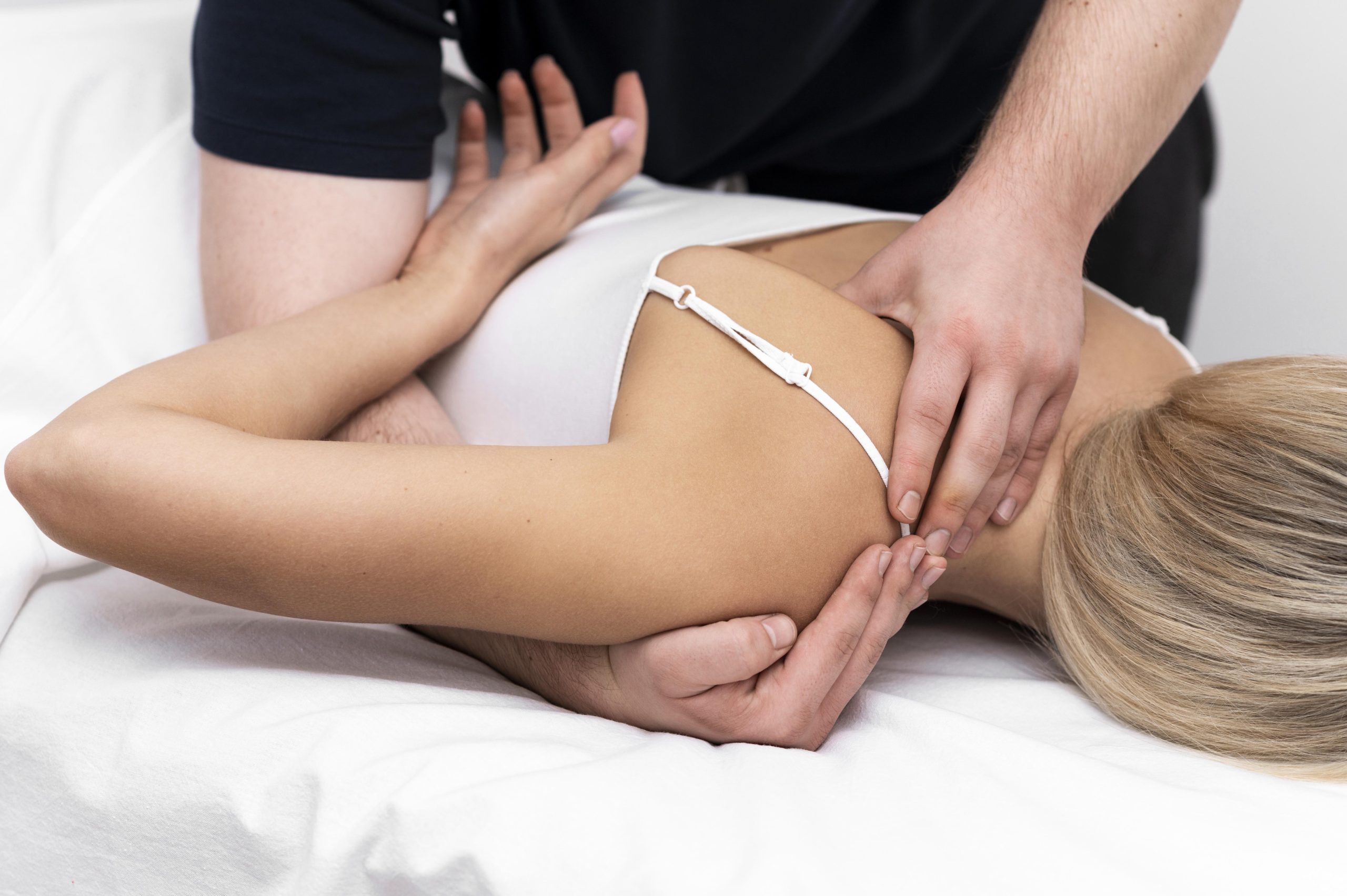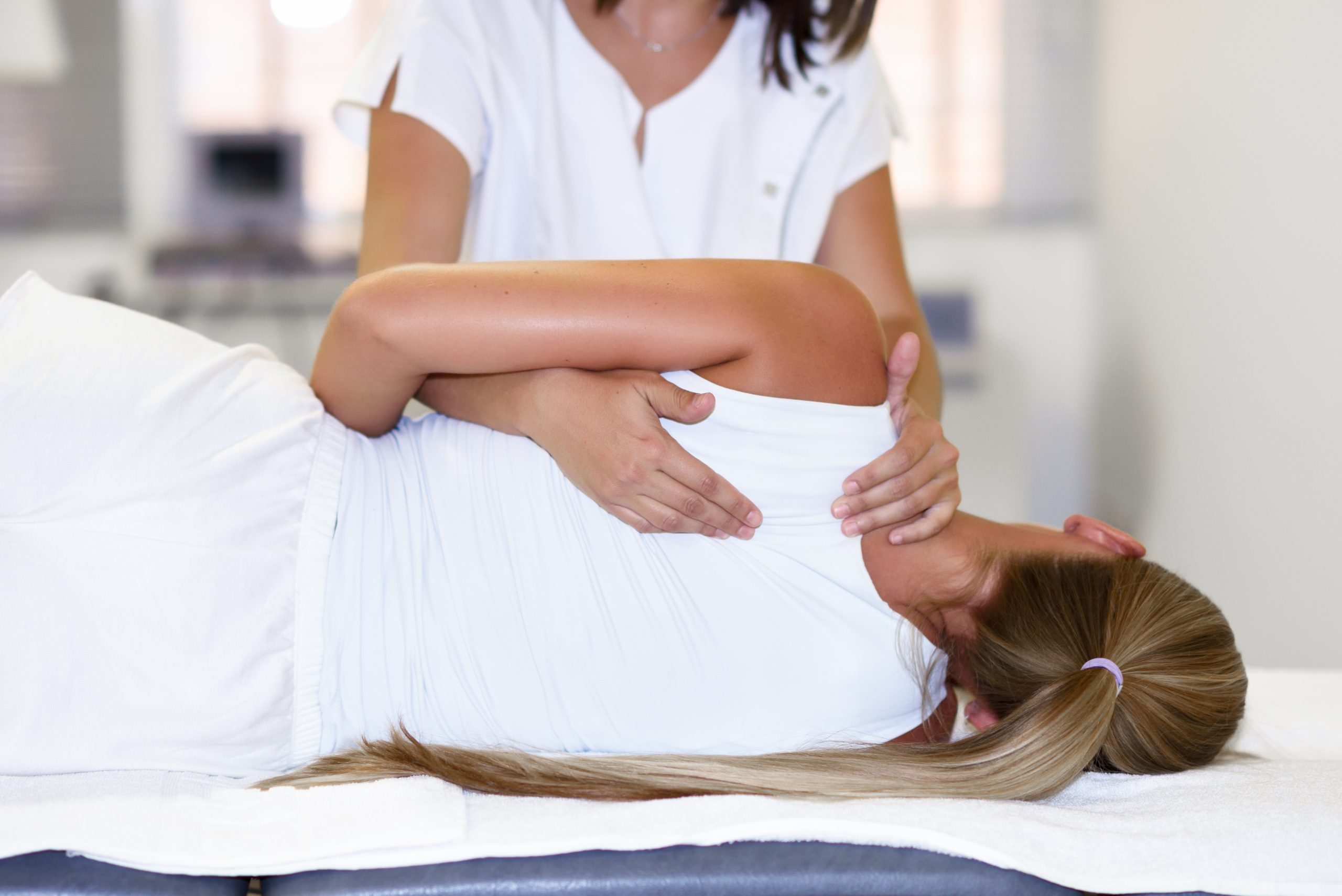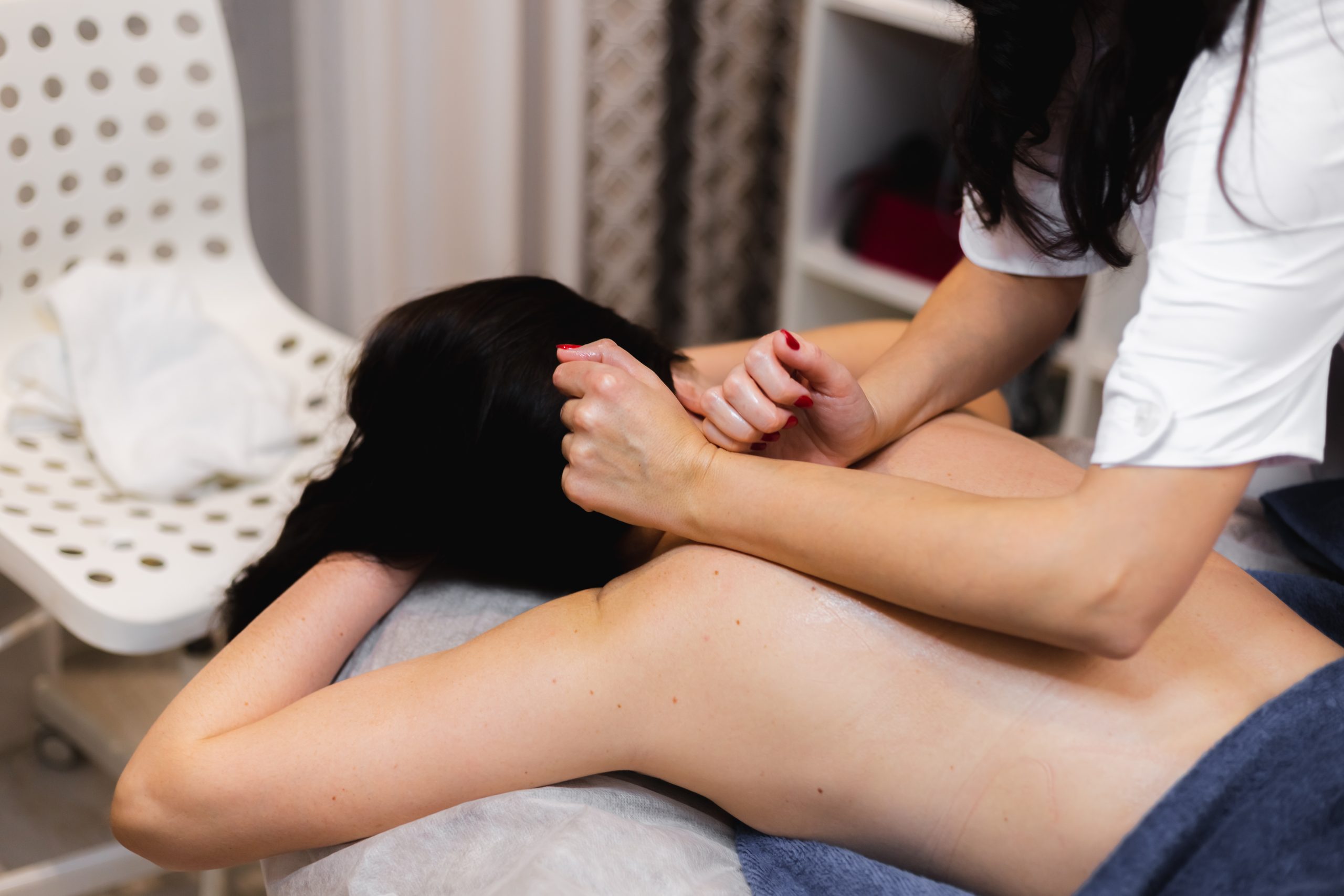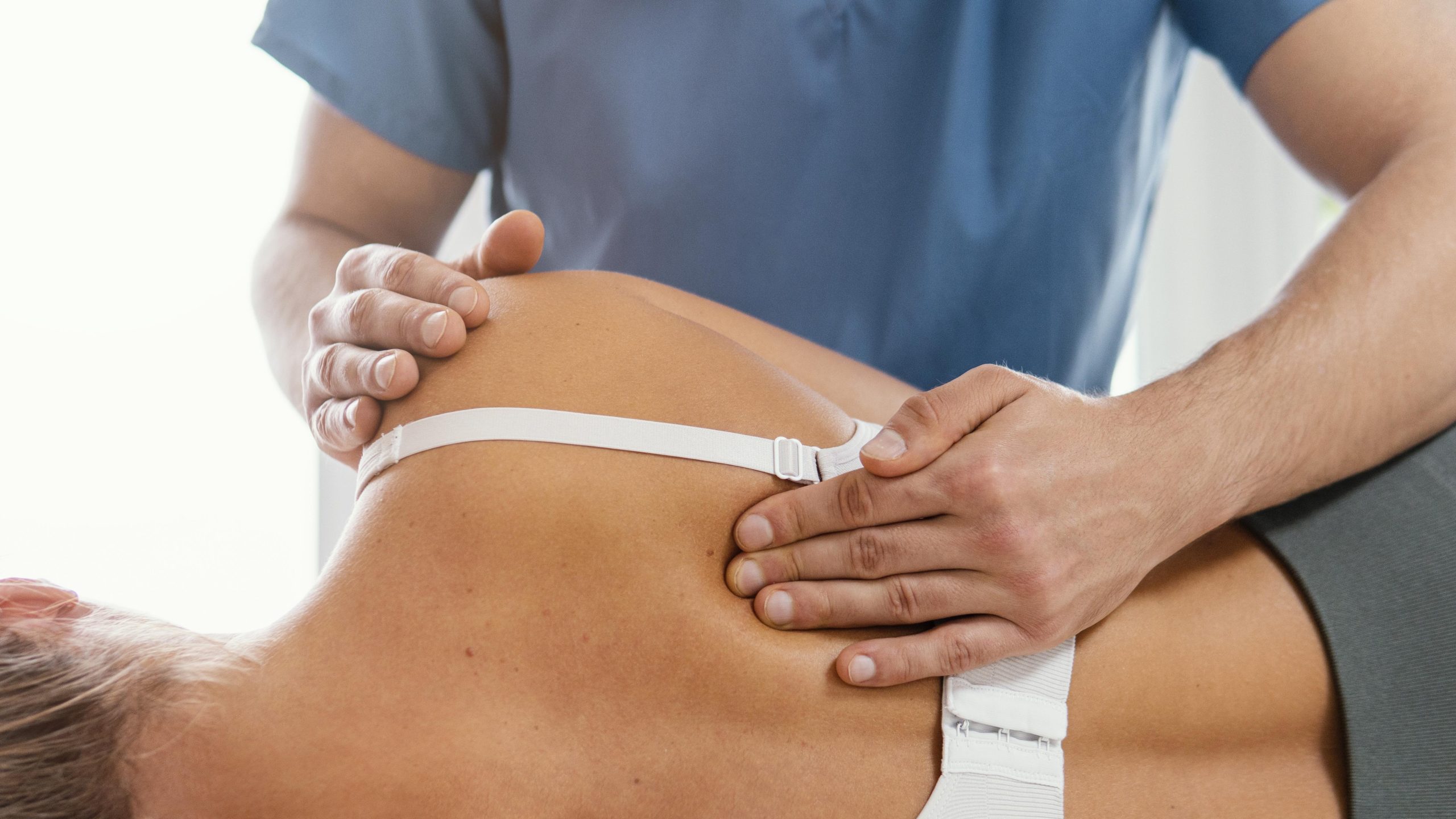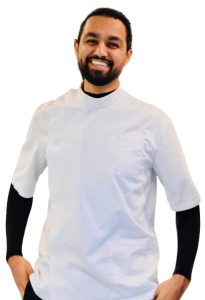
Ketan Mistry is an experienced Osteopath with additional skills in Sports Massage and Dry Needling/Medical Acupuncture. A passion for enhancing well-being, he dedicates his practice to assist individuals with both acute and chronic conditions, injuries, and aliments such as headaches, migraines, back pain, and any discomfort which can arise from work, keeping fit and active, as well as daily living. He is dedicated to improving and promoting overall well-being through personalised care.
Fees:
Initial Appointment (45-60mins) – £90
Follow up Sessions (30 mins) – £60
Sports Massage (1hr, 1.5hr) – £75, 100
Cancellation charge (if within 24 hours) /Non-attendance charge – £25.00
Contact
M: 07970229912
E: ketan@mistryosteopath.com
Osteopaths are healthcare professionals who focus on treating the musculoskeletal system and its impact on overall health. They employ a holistic approach that emphasises the interconnectedness of the body’s structure and function. Osteopathy involves a combination of manual techniques, patient education, and lifestyle recommendations to promote well-being.
At an Osteopath appointment, you can anticipate a comprehensive approach to your well-being:
Assessment:
Osteopaths conduct thorough assessments, delving into your medical history, lifestyle, and current health concerns. Physical examinations evaluate posture, joint mobility, and tissue health.
Manual Techniques:
The session involves hands-on manual techniques, including soft tissue manipulation, joint mobilisation, and stretching to enhance muscle, joint, and connective tissue function.
Musculoskeletal Alignment:
Osteopaths focus on restoring balance and alignment within the musculoskeletal system, addressing imbalances contributing to pain, discomfort, or dysfunction.
Visceral Manipulation:
Some use of gentle techniques for visceral manipulation, addressing internal organ imbalances to enhance overall health and alleviate symptoms.
Patient Education:
Collaborative care includes education on lifestyle factors, ergonomics, and exercises to empower individuals for long-term health.
Preventive Care:
Osteopathy emphasises preventive care by identifying and addressing potential issues early, promoting optimal health and preventing recurrence.
During a typical consultation you can expect:
Case History:
The Osteopath gathers detailed information about your medical history, past injuries, surgeries, and existing health conditions, forming a comprehensive overview.
Symptom Analysis:
In-depth discussions about your current symptoms, including location, intensity, and duration, help the Osteopath understand your specific concerns.
Postural Assessment:
Observing your posture, to look and address for misalignments or imbalances that may contribute to your condition.
Range of Motion Testing:
Evaluating joint range of motion helps identify restrictions or abnormalities, providing insights into how well your joints move.
Palpation:
Hands-on palpation assesses tissues, muscles, and joints to identify areas of tension, tenderness, or restriction.
Orthopaedic Testing:
Specific orthopaedic tests may be performed to pinpoint the source of discomfort, aiding in diagnosis and understanding the nature of the problem.
Treatment Plan Discussion:
Based on assessment findings, a personalised treatment plan is discussed, incorporating manual techniques, exercises, lifestyle recommendations, and self-care strategies.
Patient Education:
Throughout the consultation, the Osteopath provides education on your condition, explaining how structural and functional imbalances contribute to symptoms and offering guidance on prevention.
Dry Needling:
Aims to release muscle tension and alleviate pain by targeting trigger points directly. It’s important to communicate openly with your practitioner throughout the consultation and treatment to ensure a safe and effective experience.
Medical History and Assessment:
Your practitioner will begin by reviewing your medical history, including any current health conditions, medications, and previous treatments. They may also assess your specific musculoskeletal concerns or areas of pain.
Discussion of Symptoms:
You’ll have a conversation about the symptoms or issues you’re seeking to address through dry needling. This may include muscle pain, trigger points, or restrictions in range of motion.
Physical Examination:
The practitioner will conduct a physical examination to identify trigger points or areas of muscle tightness. This involves palpation and observation to pinpoint the locations for dry needling.
Explanation of Dry Needling:
Your practitioner will explain the dry needling process, outlining how thin needles will be inserted into specific trigger points or muscle knots. They may describe the expected sensations during the procedure.
Informed Consent:
Before proceeding, you’ll be asked to provide informed consent for the dry needling treatment. This ensures that you are aware of the procedure and its potential benefits and risks.
Dry Needling Session:
The actual dry needling session involves the insertion of thin needles into targeted areas of muscle tension or trigger points. The needles stimulate the release of tension and promote improved blood flow.
Sensation Feedback:
During the session, you’ll communicate with the practitioner about any sensations you experience, such as a dull ache or muscle twitching. This feedback helps the practitioner adjust the needle placement and intensity as needed.
Post-Needling Care:
After the session, your practitioner will provide instructions for post-needling care, including hydration, gentle movement, or application of heat or cold to the treated areas.
Discussion of Follow-up Sessions:
Depending on your response to the initial treatment, the practitioner may discuss the potential need for follow-up sessions and create a plan tailored to your specific goals.
Sports Massage: a therapeutic technique designed to address musculoskeletal issues and enhance athletic performance. It involves targeted manipulation of soft tissues, such as muscles and connective tissue, through various massage techniques. Sports massages aim to alleviate muscle tension, improve flexibility, promote circulation, and aid in the prevention and rehabilitation of sports-related injuries.
Case history:
Your therapist will begin by gathering information about your medical history, current health status, and any specific issues or goals you have for the session.
Discussion of Concerns:
You’ll have a conversation about any areas of pain, tension, or discomfort you’re experiencing. This helps the therapist tailor the massage to address your specific needs.
Assessment of Movement Patterns:
Depending on your concerns, the therapist may assess your range of motion, muscle flexibility, and overall movement patterns. This helps identify areas that may benefit from focused attention during the massage.
Hands-On Treatment:
The session will involve targeted, hands-on techniques to release muscle tension, improve circulation, and enhance flexibility. The therapist may use various modalities, such as Swedish massage, deep tissue massage, and stretching techniques.
Post-Massage Recommendations:
After the massage, your therapist will provide advice on self-care practices, stretches, or exercises to maintain the benefits of the session and prevent future issues.
Follow-up Planning:
If needed, the therapist may discuss a plan for future sessions based on your goals and the response to the initial treatment.
